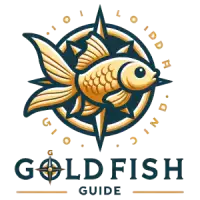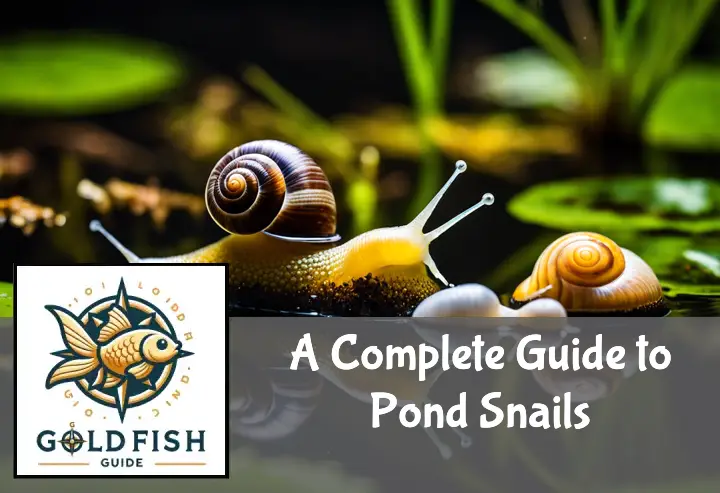Ever had a close encounter with those little slippery creatures that call your garden pond their home? Yes, I’m talking about Pond Snails. They might seem insignificant at first sight, but let me tell you, there’s more to these tiny fellas than meets the eye.
In this guide, we’ll delve into the fascinating world of Pond Snails – from their life cycle to their role in the ecosystem. And trust me when I say this, by the end of it all, you’ll be looking at these humble beings with newfound respect. So buckle up and keep reading about A Complete Guide to Pond Snails!
Key Takeaways
- Pond snails are a diverse group of gastropods found in freshwater habitats.
- They play vital roles in ecosystems, including algae control and decomposition.
- There are various types, such as the common pond snail and ramshorn snail, each with unique characteristics.
- Proper care involves maintaining water quality, temperature, and providing a diet of plant matter and detritus.
- Overpopulation can be controlled through natural predators or manual removal.
What are Pond Snails?
Well, let’s dive right into the world of Pond Snails. These little creatures are more than just a pretty shell. They’re aquatic gastropods that live in ponds, lakes, and streams. Now, you might be thinking, “Why should I care about snails?” Well, they play a crucial role in maintaining the health of our water bodies.
Definition and Overview of Pond Snails
So what exactly are Pond Snails? In simple terms, they’re small mollusks that live underwater. They have a coiled shell on their back and move around using a muscular foot. Yeah, you heard it right! A single foot! Their behavior is quite fascinating too. They’re mostly active at night and love to munch on algae and decaying plant matter.
Different Types of Pond Snails
There’s quite a variety when it comes to Pond Snails. Some are as tiny as a grain of sand while others can grow up to 3 inches long! The coloration varies too – from translucent to shades of brown or even black. And guess what? Each type has its own preferred habitat. Some like still waters while others prefer flowing streams.
The Role of Pond Snails in the Ecosystem
Now onto why these Pond Snails matter so much for our ecosystems. First off, they’re great at controlling algae levels by feeding on them. This helps keep our water bodies clean and healthy. But that’s not all! They also contribute to nutrient cycling by breaking down organic matter into nutrients that can be used by plants and other organisms.
How to Identify Pond Snails?
Identifying Pond Snails can be a fun and educational experience. You just need to know what to look for. Let’s dive into the nitty-gritty of Pond Snail Identification.
Physical Characteristics of Pond Snails
When it comes to recognizing these little critters, size does matter. The Size of Pond Snails varies from teeny-tiny (think grain of rice) to surprisingly large (like a golf ball).
Coloration is another key feature. The Coloration of Pond Snails ranges from dark brown to light beige, sometimes with beautiful spiral patterns.
Lastly, don’t forget the shell! The Shell Structure in Pond Snails is typically coiled and round, but some species might surprise you with their unique shapes.
Common Species of Pond Snails
Now let’s talk about some popular fellas! One commonly spotted guy is the Great Pond snail. It’s large and has a distinctive pointed shell.
The Ramshorn snail is another common sight in ponds across Europe and North America. Its flat, spiral shell makes it easy to identify.
And then there’s the Bladder snail – small but mighty! This little fella is found worldwide and has an oval-shaped shell that’s quite unique among Popular Species of Pond Snails.
Habitat Preferences of Pond Snails
So where do these guys hang out? Well, pond snails aren’t too picky when it comes to their homes or as we call them – habitats.
They prefer calm waters with plenty of vegetation. They love munching on algae and decomposing plants, so they’re often found in areas with lots of greenery.
Water quality matters too! While they can tolerate a range of conditions, they thrive best in clean water with low levels of pollutants. So next time you’re near a pond, take a peek – you might just spot a Pond Snail!
Life Cycle and Behavior of Pond Snails
Now, let’s dive into the fascinating life cycle and behavior of Pond Snails. From their unique reproduction process to their growth stages, we’ll cover it all. And don’t worry, we’ll keep it simple for all you beginners out there!
Reproduction Process of Pond Snails
When it comes to the birds and the bees of pond snail mating habits, these little guys have a unique approach. They’re hermaphrodites, which means each snail carries both male and female reproductive organs. Talk about self-sufficient!
Now onto the egg-laying part. After a romantic rendezvous, they lay tiny translucent eggs in clusters on plants or rocks submerged in water. It’s like they’re setting up their own little underwater nurseries! This is an essential part of the snail reproduction cycle.
Growth and Development Stages
Once those eggs hatch, baby snails (or ‘hatchlings’ if you want to get technical) begin their journey through various pond snail growth stages. These tiny critters start off smaller than a pinhead but don’t be fooled by their size!
As they grow older, they develop that signature spiral shell we all know and love. The shell grows with them, adding new whorls as they age – kind of like tree rings but for snails! This transformation from hatchling to adult snail is truly one for the books.
Typical Behavior Patterns
So what do pond snails do all day? Well, when they’re not busy reproducing or growing, they exhibit some interesting behaviors. For starters, their feeding habits are pretty straightforward – they’re omnivores munching on algae, dead plants or even other deceased critters in the pond.
Their movement patterns are also quite intriguing. They glide along surfaces using a single muscular foot (imagine that workout!), leaving behind a slimy trail. This is just a glimpse into the common behaviors of pond snails. Who knew these little guys could be so interesting?
Benefits and Drawbacks of Having Pond Snails
When it comes to pond snail benefits, there’s a lot to love. But, like anything in life, there are also some drawbacks of pond snails. Let’s dive into both sides of the coin.
Benefits: Algae Control, Decomposition, etc.
One major perk of having these little guys around is their knack for algae control. Pond snails are like nature’s little vacuum cleaners, munching away on unwanted algae that can make your pond look less than pristine.
In addition to being tidy eaters, they’re also fantastic decomposers. They help break down organic matter in the pond, aiding in the decomposition process by pond snails. This helps keep your water clean and healthy for other aquatic life.
Drawbacks: Overpopulation, Plant Damage, etc.
On the flip side though, there can be too much of a good thing. One issue is overpopulation of pond snails. When their numbers get out of hand, they can become a nuisance rather than an asset.
Another potential problem is plant damage from pond snails. If you’ve got prized lilies or other aquatic plants in your pond, an overzealous population of hungry snails might just see them as dinner! So controlling pond snail population becomes crucial if you want to maintain balance in your ecosystem.
How to Manage Pond Snail Population?
Managing pond snail populations is crucial for maintaining a healthy and balanced aquatic ecosystem. There are three main methods to keep these little critters in check: natural predators, manual removal, and chemical treatments.
Natural Predators and Their Role
Mother Nature provides her own snail predators that can help with pond snail control. Creatures like ducks, turtles, or certain species of fish have a knack for munching on these slimy guys. They play a vital role in the ecosystem balance, keeping the snail population from exploding.
But remember, it’s all about balance. Introducing too many predators could lead to other problems. So, it’s essential to get the predator-prey relationship just right.
Manual Removal Techniques
If you’re not squeamish, manual snail removal can be an effective way to reduce the number of pond snails. It’s as simple as reaching in and handpicking them out. But let’s be honest, it can be a bit gross and time-consuming.
The drawback? Well, it’s nearly impossible to remove every single one of them manually. Plus, if you miss even a few, they’ll multiply faster than bunnies on a spring morning!
Chemical Treatments
When all else fails, there are always chemical solutions for controlling pond snails. These treatments can be highly effective but use them with caution! They might have side effects on other aquatic life.
Remember that while these chemicals do their job at pest control pretty well, they don’t discriminate between pests and non-pests. The impact on aquatic life can be significant if not used responsibly. So always read the label and follow instructions carefully when using any form of chemical pest control.
FAQs about “A Complete Guide to Pond Snails”.
What do pond snails eat besides algae?
Pond snails are not picky eaters; besides algae, they munch on dead plant material, leftover fish food, and even decaying animals. They’re nature’s little cleanup crew!
Can pond snails live in aquariums with other fish?
Absolutely! Pond snails can coexist peacefully with most fish species. Just keep an eye out for aggressive or large fish that might see them as a snack.
How long do pond snails typically live?
Pond snails have a lifespan ranging from one to three years, depending on their environment and species. A comfy pond or well-maintained aquarium can be their fountain of youth.
Do pond snails carry diseases?
While it’s rare, pond snails can carry parasites or bacteria harmful to humans and pets. It’s always a good idea to wash your hands after handling them or their habitat.
How fast do pond snails reproduce?
Some might say too fast! Many species are prolific breeders, with some capable of reproducing both sexually and asexually. Without predators, their population can skyrocket.
Are there any natural enemies of pond snails?
Yes, several creatures enjoy a good snail snack. These include certain types of fish (like loaches), birds, frogs, and even some insects.
How can I tell if my pond has too many snails?
Signs of overpopulation include visible damage to aquatic plants, excessive slime on surfaces, and obviously, seeing more snails than water!
Can I introduce pond snails from the wild into my garden pond?
It’s possible but proceed with caution. Wild snails may bring unwanted guests (parasites or diseases) into your serene garden setup. Quarantining new arrivals is always wise.
To Wrap Up
Just like the secret sauce in grandma’s favorite recipe, Pond Snails add that extra zing to your aquatic ecosystem. They’re the unsung heroes, tirelessly cleaning and maintaining balance.
So, why not invite these little janitors into your pond? Remember, a snail’s pace can win the race for a healthier and happier pond environment!



